Bài giảng Phương pháp kiểm tra và đánh giá học tập - Chapter 7: Oral production tests
I. Some difficulties in testing
the speaking skills
There aren’t still the exact criteria for measuring
speaking skills as well as the weighting given to
such components as correct pronunciation.
The interdependence of the speaking and
listening skill increases the difficulty of any serious
attempt to analyze precisely what is being tested
at one time.
Administration is another difficulty as it is
impossible to test a large number of students
because of limited time involved.
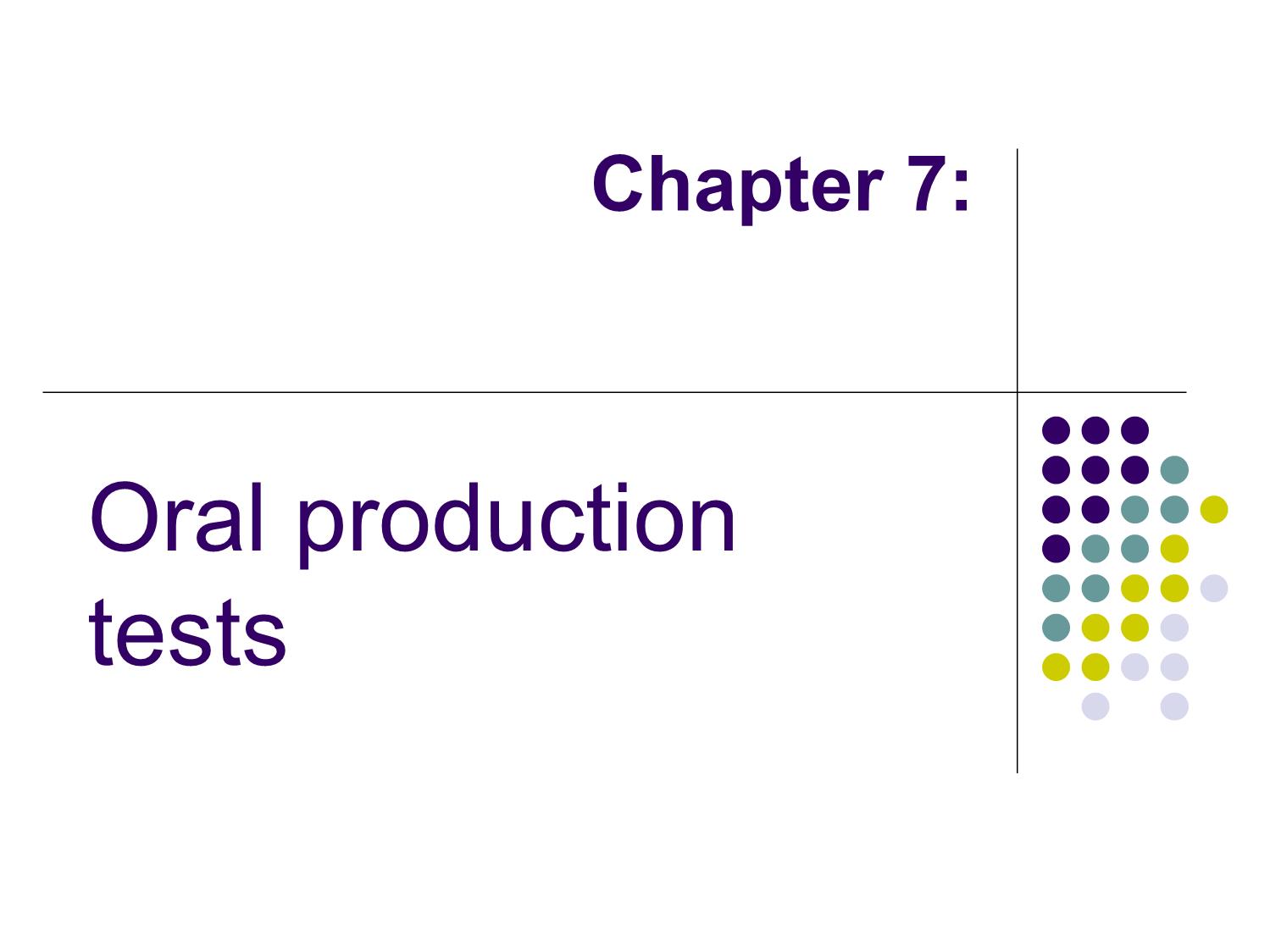
Trang 1
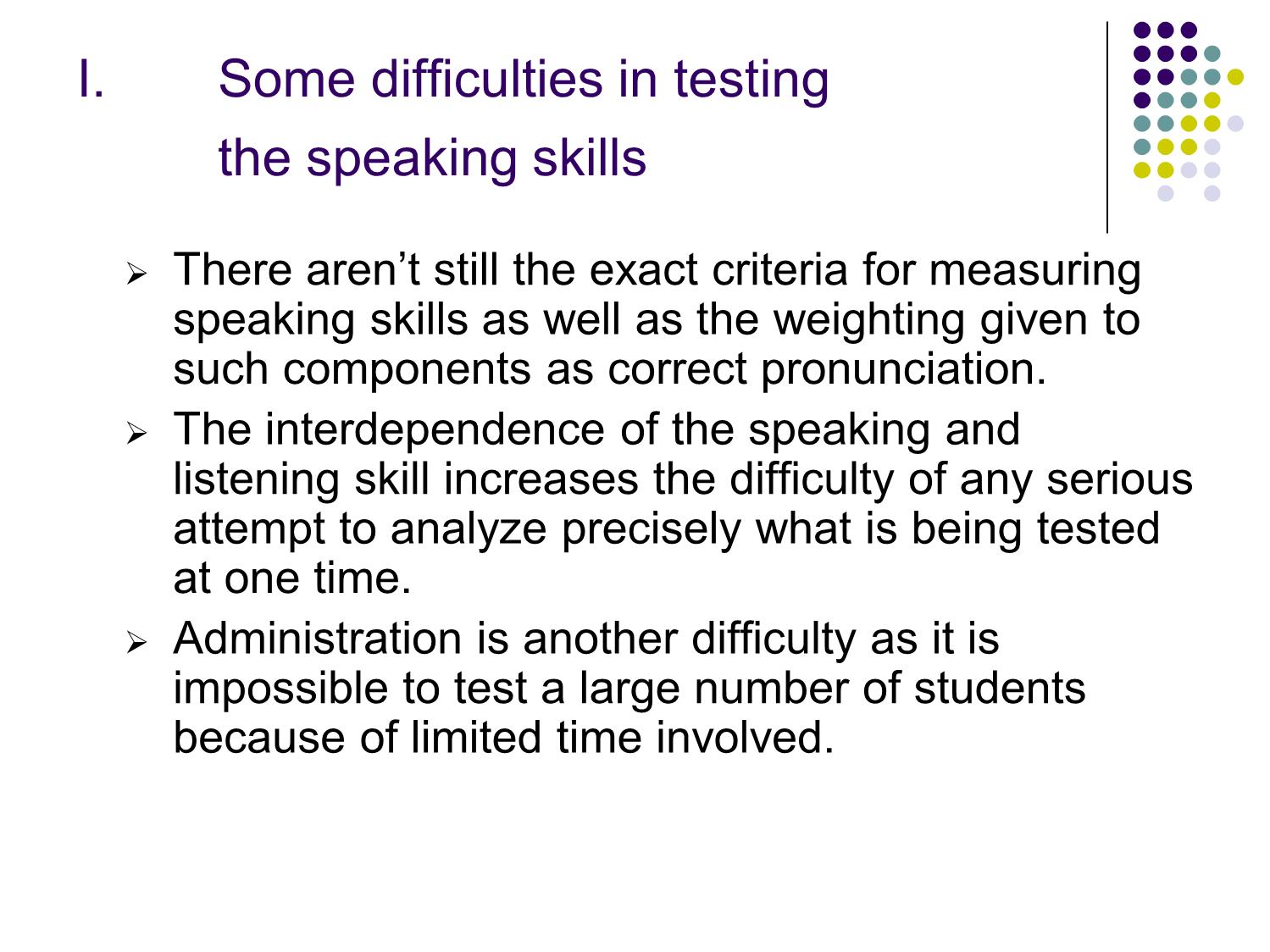
Trang 2
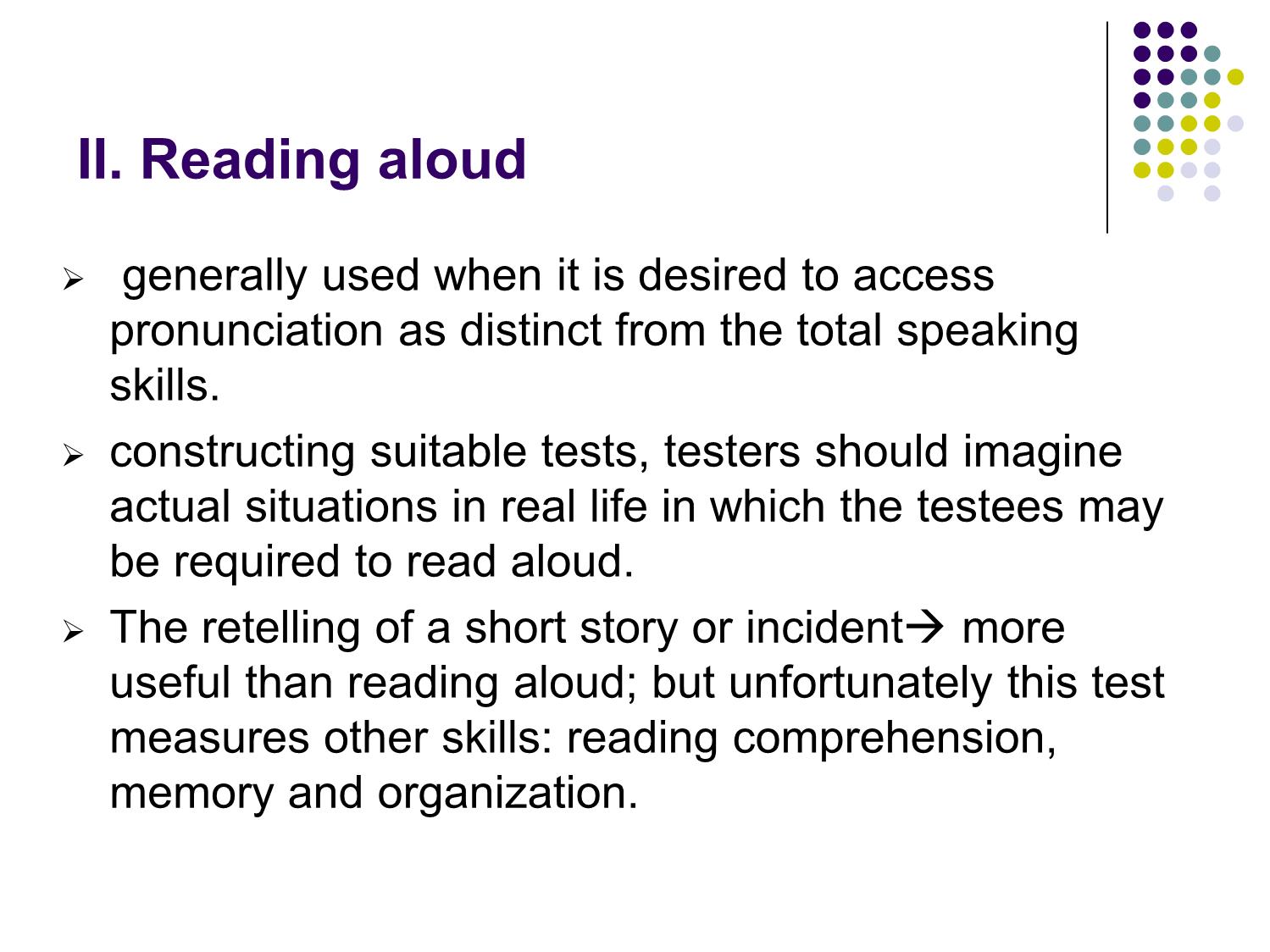
Trang 3
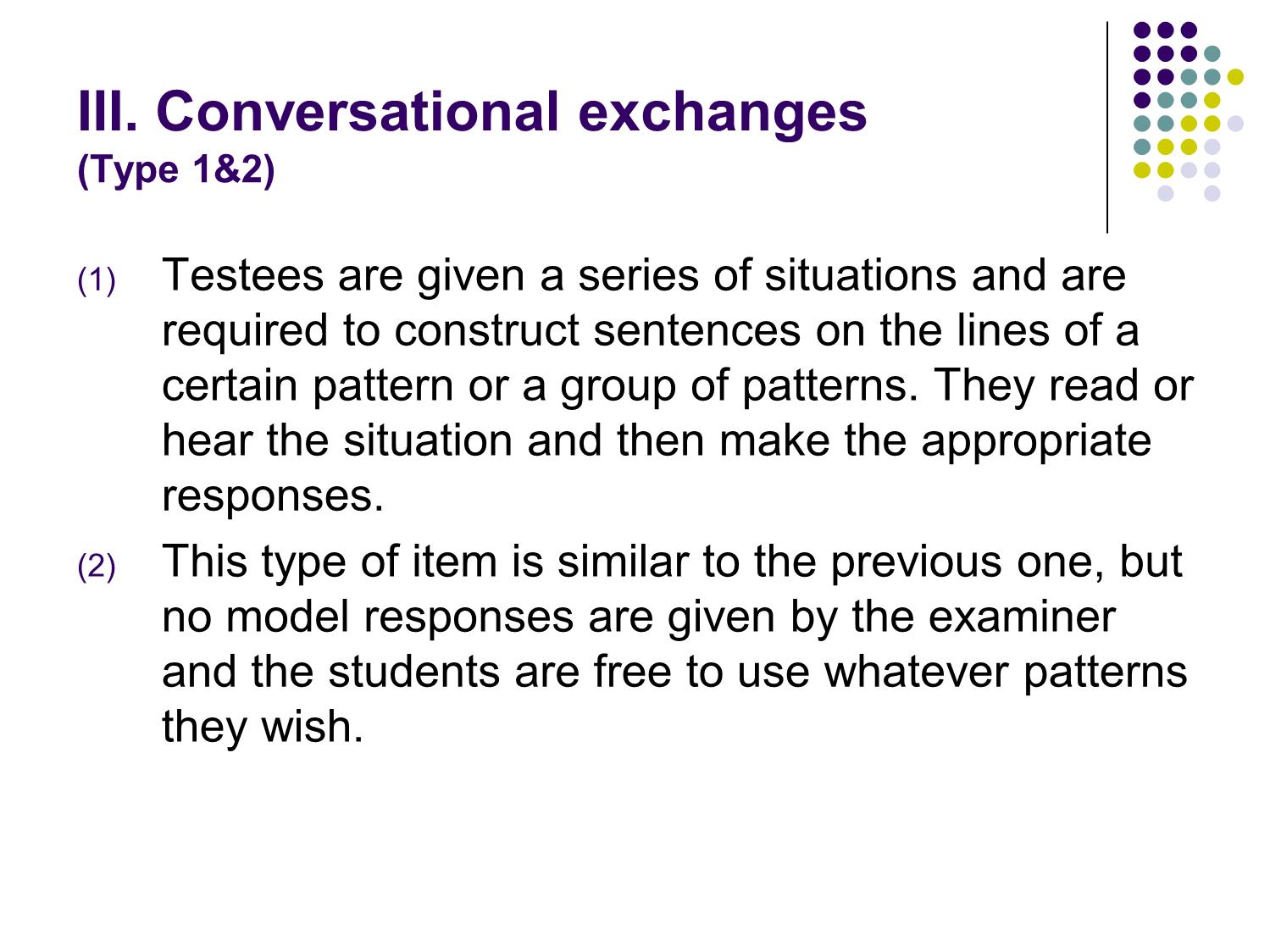
Trang 4
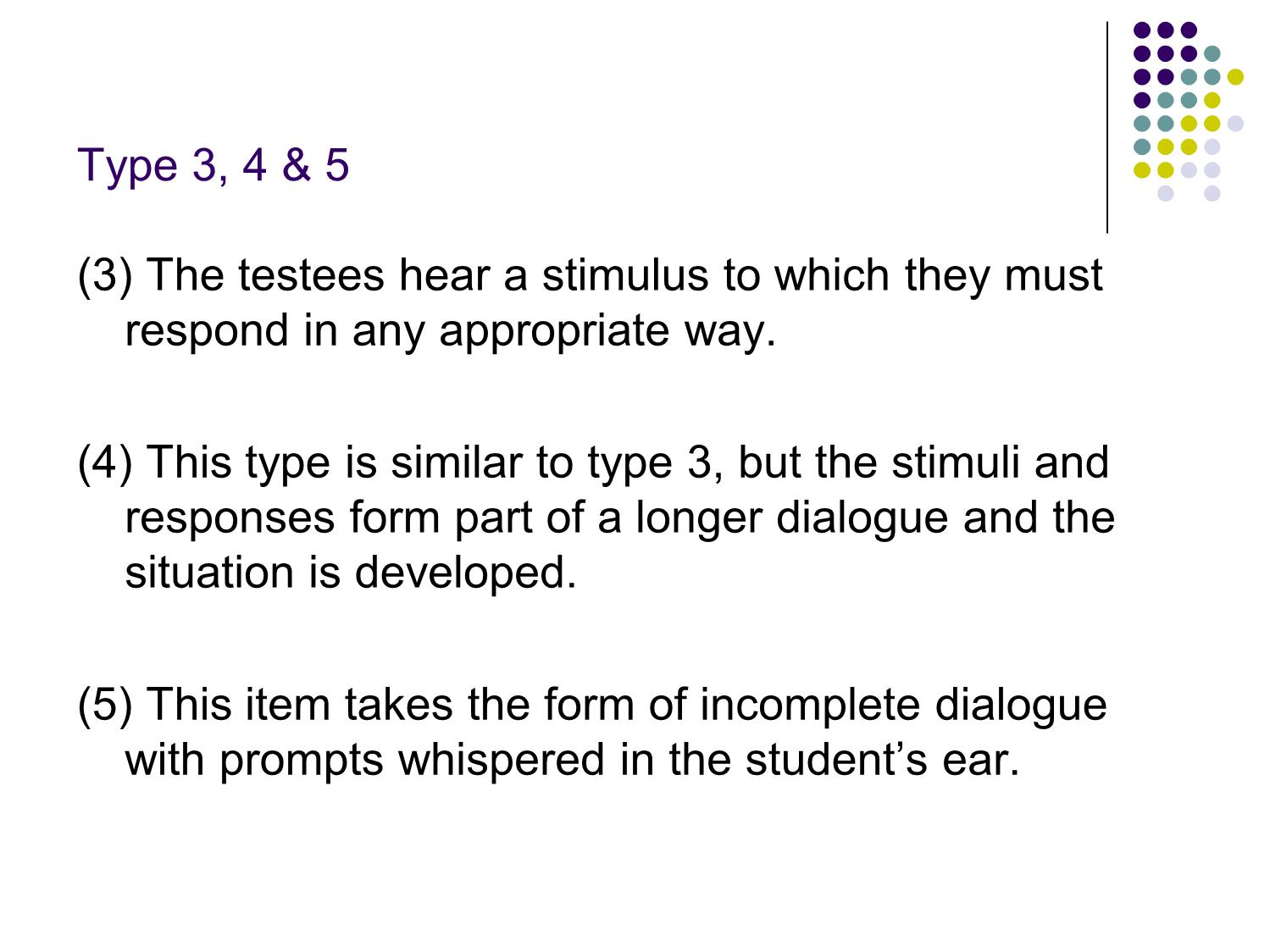
Trang 5
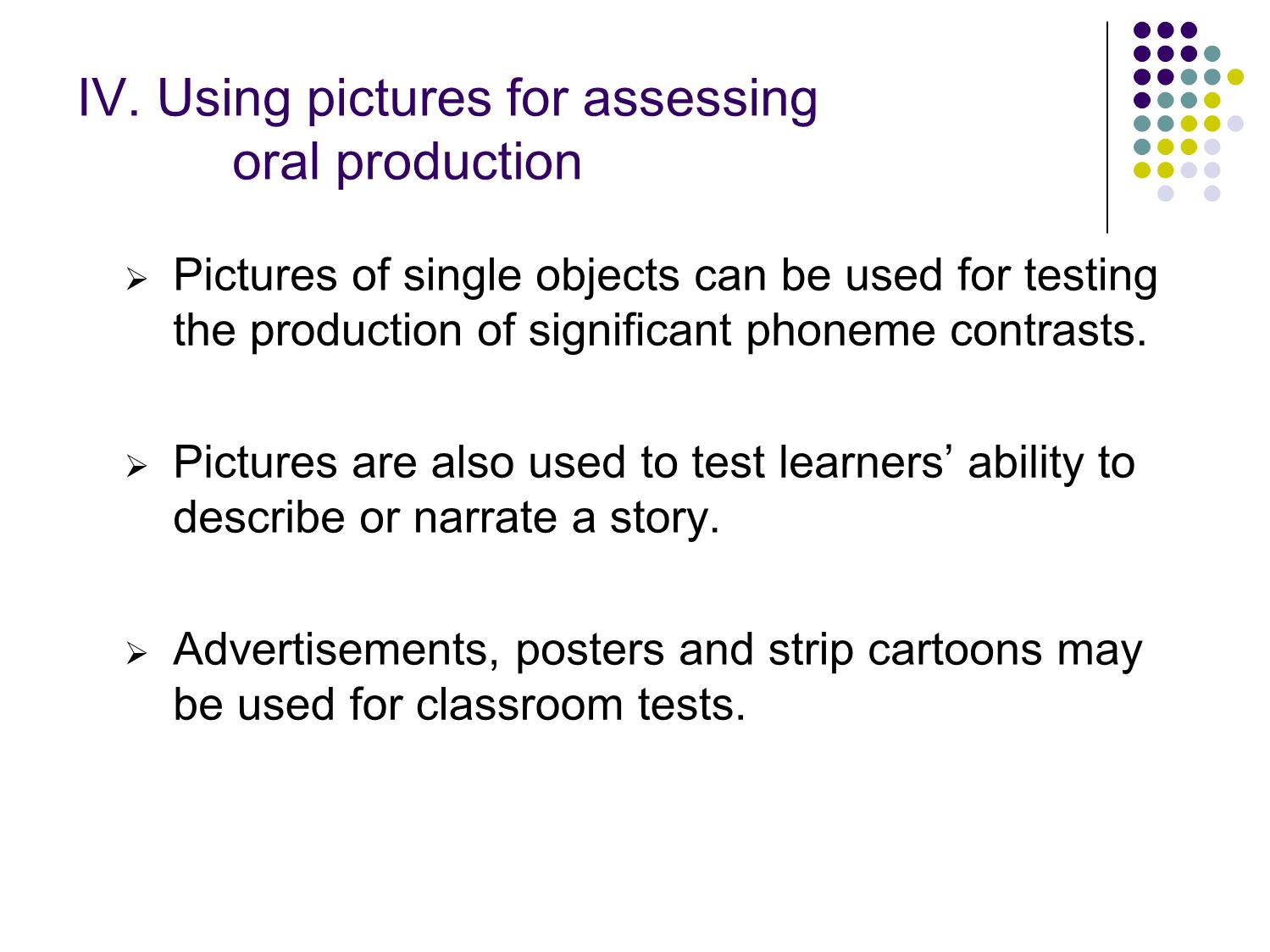
Trang 6
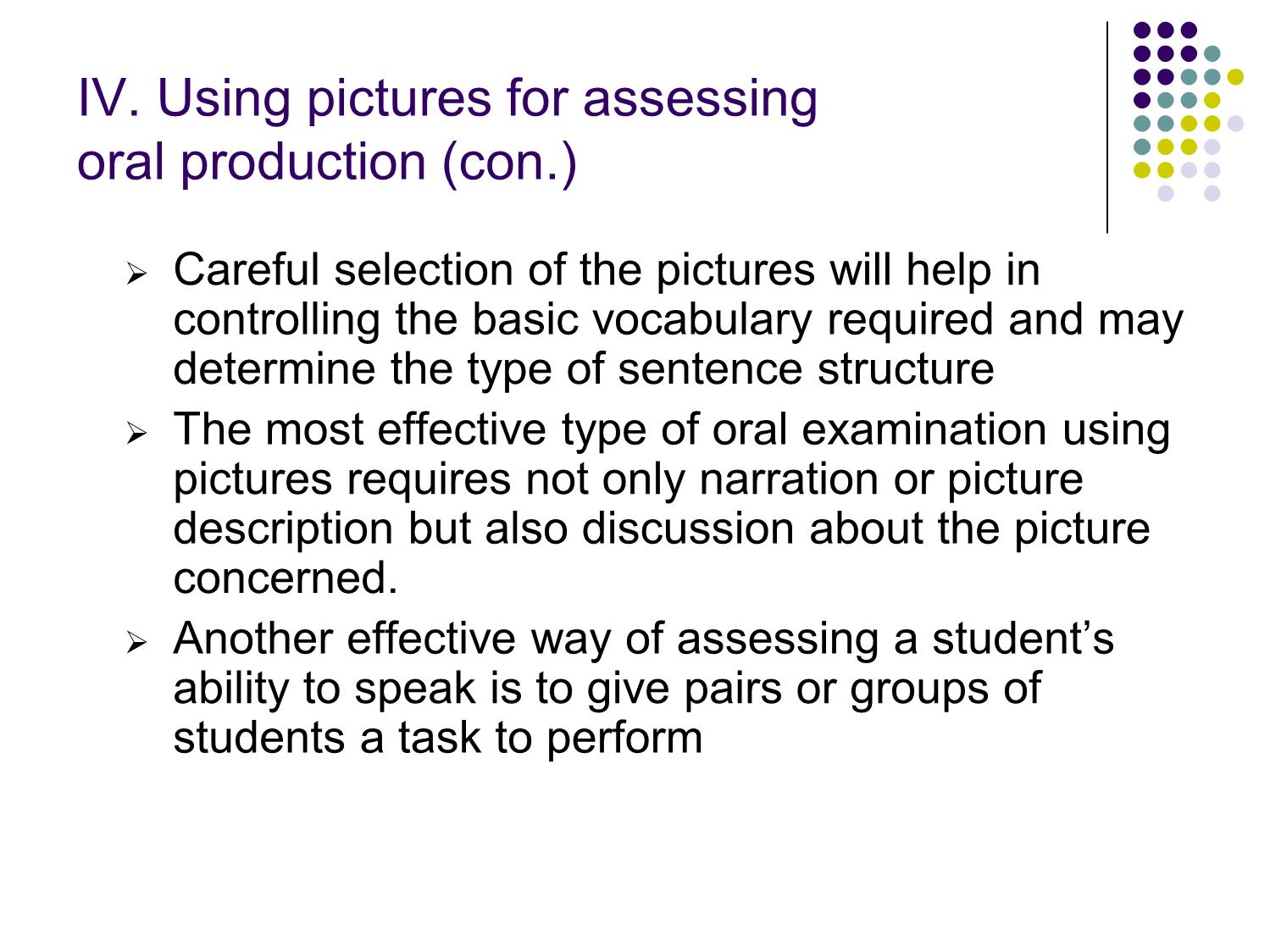
Trang 7
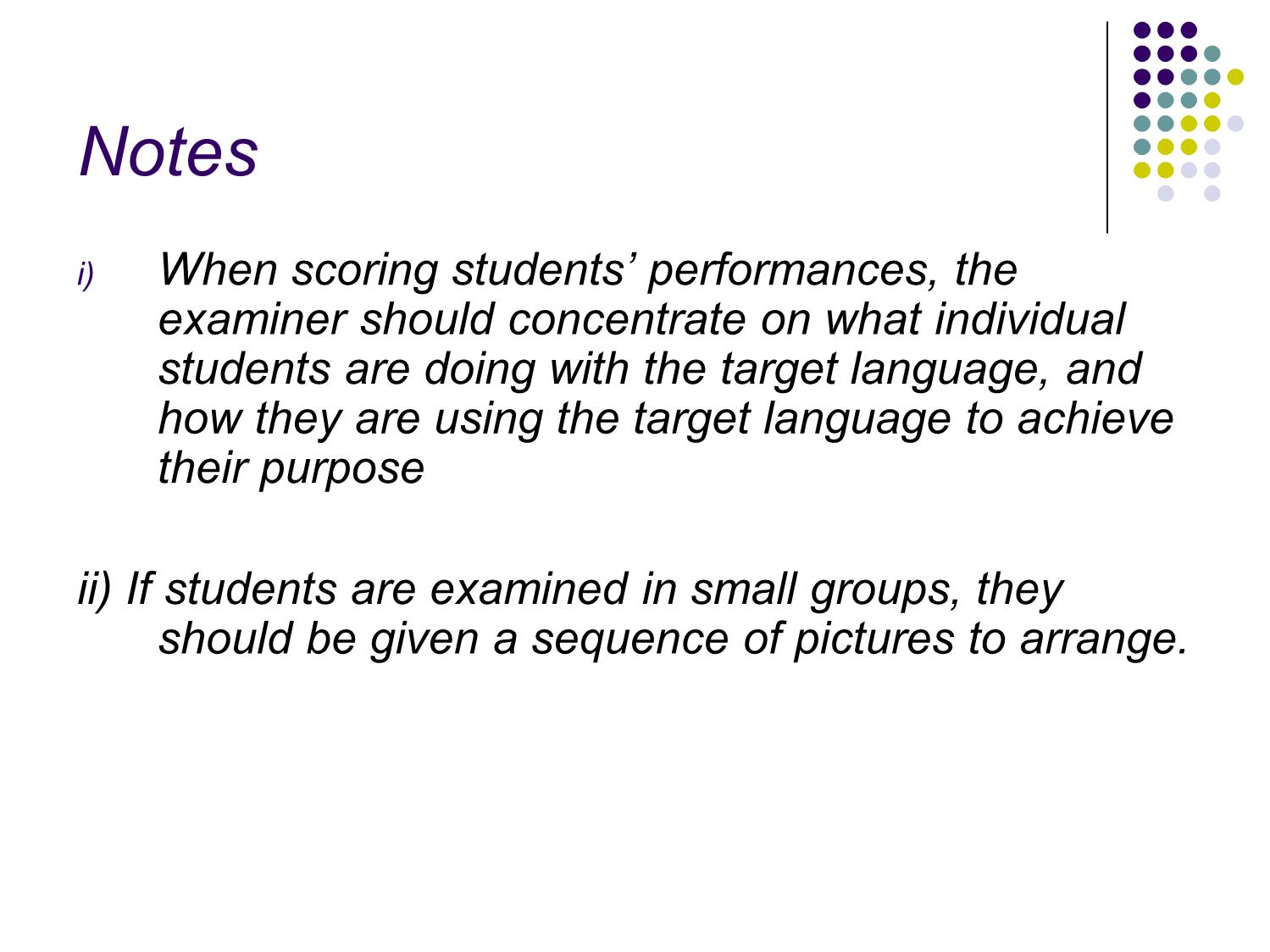
Trang 8
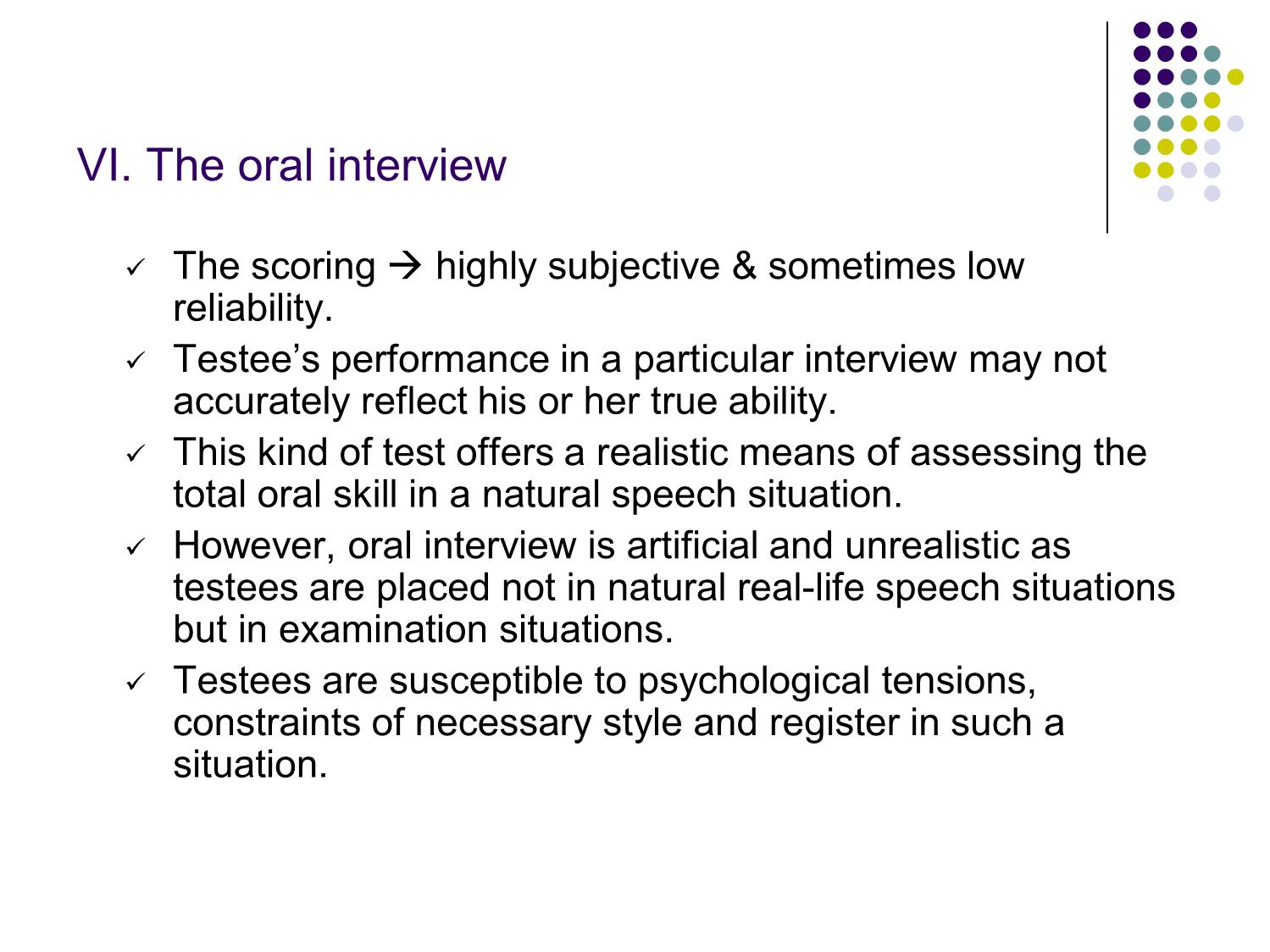
Trang 9
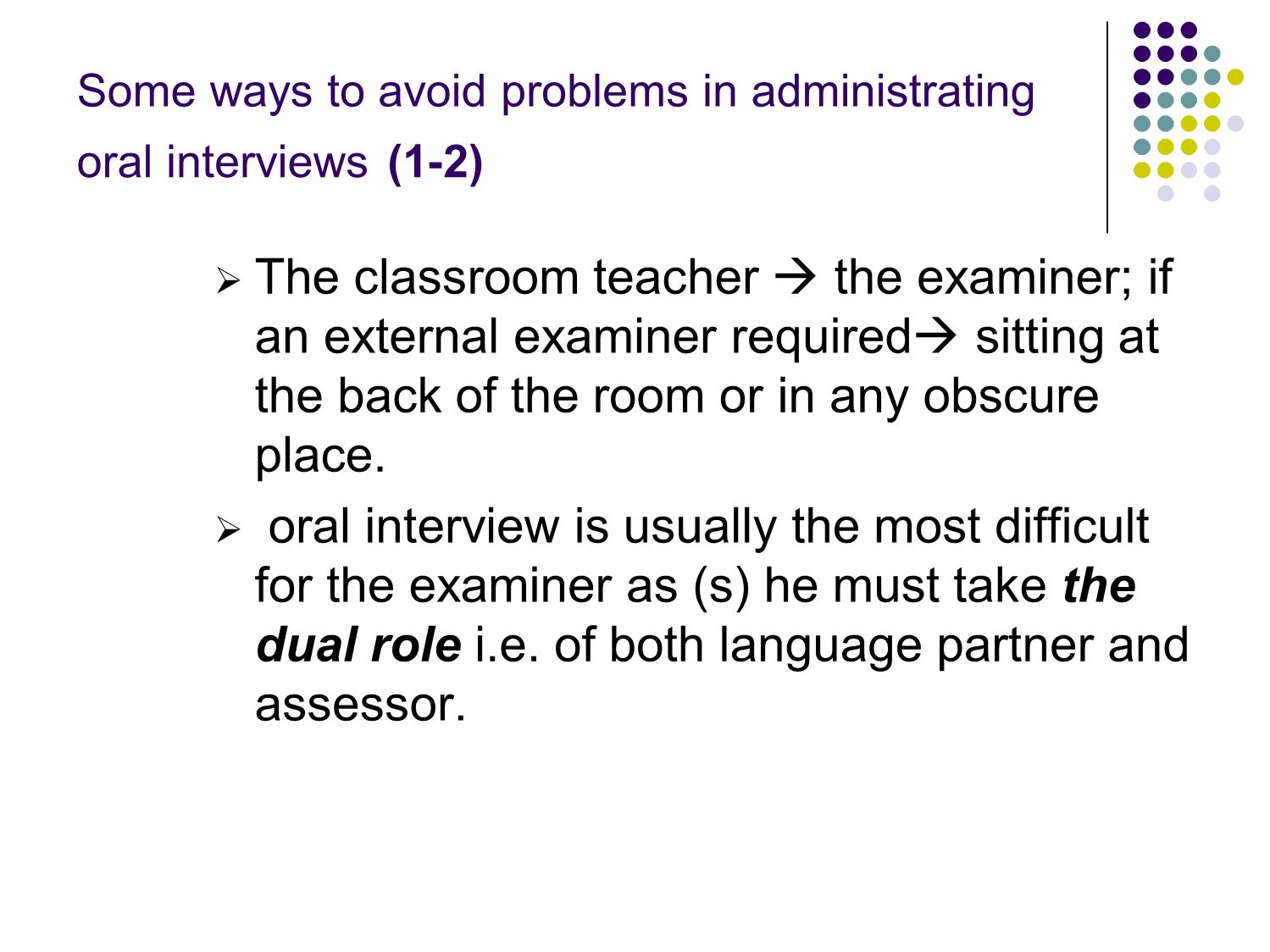
Trang 10
Tải về để xem bản đầy đủ
Bạn đang xem 10 trang mẫu của tài liệu "Bài giảng Phương pháp kiểm tra và đánh giá học tập - Chapter 7: Oral production tests", để tải tài liệu gốc về máy hãy click vào nút Download ở trên
Tóm tắt nội dung tài liệu: Bài giảng Phương pháp kiểm tra và đánh giá học tập - Chapter 7: Oral production tests
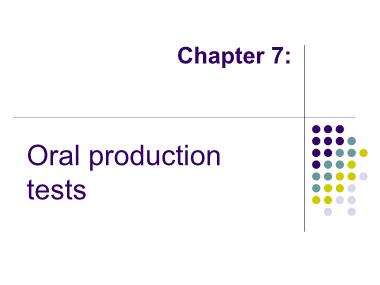
Chapter 7: Oral production tests I. Some difficulties in testing the speaking skills There aren’t still the exact criteria for measuring speaking skills as well as the weighting given to such components as correct pronunciation. The interdependence of the speaking and listening skill increases the difficulty of any serious attempt to analyze precisely what is being tested at one time. Administration is another difficulty as it is impossible to test a large number of students because of limited time involved. II. Reading aloud generally used when it is desired to access pronunciation as distinct from the total speaking skills. constructing suitable tests, testers should imagine actual situations in real life in which the testees may be required to read aloud. The retelling of a short story or incident more useful than reading aloud; but unfortunately this test measures other skills: reading comprehension, memory and organization. III. Conversational exchanges (Type 1&2) (1) Testees are given a series of situations and are required to construct sentences on the lines of a certain pattern or a group of patterns. They read or hear the situation and then make the appropriate responses. (2) This type of item is similar to the previous one, but no model responses are given by the examiner and the students are free to use whatever patterns they wish. Type 3, 4 & 5 (3) The testees hear a stimulus to which they must respond in any appropriate way. (4) This type is similar to type 3, but the stimuli and responses form part of a longer dialogue and the situation is developed. (5) This item takes the form of incomplete dialogue with prompts whispered in the student’s ear. IV. Using pictures for assessing oral production Pictures of single objects can be used for testing the production of significant phoneme contrasts. Pictures are also used to test learners’ ability to describe or narrate a story. Advertisements, posters and strip cartoons may be used for classroom tests. IV. Using pictures for assessing oral production (con.) Careful selection of the pictures will help in controlling the basic vocabulary required and may determine the type of sentence structure The most effective type of oral examination using pictures requires not only narration or picture description but also discussion about the picture concerned. Another effective way of assessing a student’s ability to speak is to give pairs or groups of students a task to perform Notes i) When scoring students’ performances, the examiner should concentrate on what individual students are doing with the target language, and how they are using the target language to achieve their purpose ii) If students are examined in small groups, they should be given a sequence of pictures to arrange. VI. The oral interview The scoring highly subjective & sometimes low reliability. Testee’s performance in a particular interview may not accurately reflect his or her true ability. This kind of test offers a realistic means of assessing the total oral skill in a natural speech situation. However, oral interview is artificial and unrealistic as testees are placed not in natural real-life speech situations but in examination situations. Testees are susceptible to psychological tensions, constraints of necessary style and register in such a situation. Some ways to avoid problems in administrating oral interviews (1-2) The classroom teacher the examiner; if an external examiner required sitting at the back of the room or in any obscure place. oral interview is usually the most difficult for the examiner as (s) he must take the dual role i.e. of both language partner and assessor. Some ways to avoid problems in administrating oral interviews (3,4& 5) never attempt to note down marks or comments while the testee is still engaged in the interview. interviewing in pairs or groups to help testees to avoid tension and language constraints they will feel free to converse and use language in a more natural and purposeful way. to ensure two sts have similar or sympathetic personalities & have similar levels of language ability Some ways to avoid problems in administrating oral interviews (6-7) concerned more with the examinees’ use of the target language to achieve their goals rather than with their knowledge or their actual ability to accomplish the task given. grammatical acceptability and pronunciation, but also appropriacy of language and effectiveness of communication. Some ways to avoid problems in administrating oral interviews (8-9) The oral interview should be scored only after the student has left the room. In order to devise a suitable scale, the examiner should first describe clearly the criteria for assessing oral ability. VII. Some other techniques for oral examining (1) the short talk testees may be allowed several days or only a few minutes to prepare the talk. a realistic test of sustained speech, but an extremely difficult exam for L2 learners at all but the most advanced stages preventing students from learning whole sections of their talk Vague subjects should be avoided VII. Some other techniques for oral examining (con.) (2) group discussing and role playing important techniques for assessing oral production, the teacher can discover how students are thinking and using the target language taking a minor role to control the role play feeling free to interrupt or control the discussion in a diplomatic way to ensure that each member of the group makes a contribution General conclusions Classroom teacher/the examiner & his/her continuous assessment a reliable method of measuring oral skills the oral interview useful because of its beneficial backwash effects on teaching (1) an oral interview involving two testees; (2) a short problem- solving activity involving the comparison or sequencing of pictures; and (3) a longer activity comprising group discussion or a role play (for classroom tests) The teacher must frequently consider the effects of examination on teaching and learning. For instance, if the reading aloud section is considered harmful in its effects on teaching, it should be omitted from the exam.
File đính kèm:
 bai_giang_phuong_phap_kiem_tra_va_danh_gia_hoc_tap_chapter_7.pdf
bai_giang_phuong_phap_kiem_tra_va_danh_gia_hoc_tap_chapter_7.pdf

